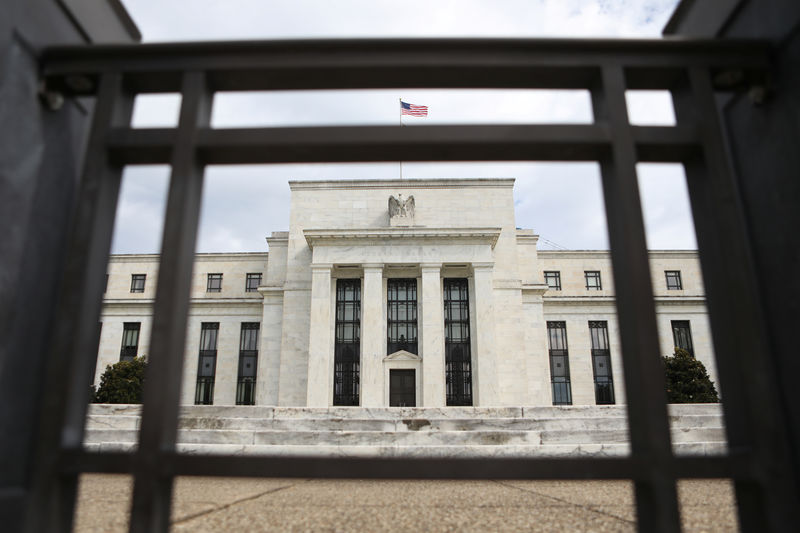(Bloomberg) -- The Federal Reserve is set for its most aggressive liftoff period in decades -- just don’t look to 2015 for guidance on its path.
Chair Jerome Powell last week pointed to an economy in “a different situation” from the last interest-rate hiking cycle, highlighting a tighter labor market, the fastest inflation since the 1980s and stronger economic growth.
The last time the central bank raised rates from zero in 2015, the economy was emerging slowly from the global financial crisis and a long recession marked by weak households. This time, the Fed is playing catchup amid decades-high inflation and a swift rebound in demand from the Covid-19 shock.
To tame prices, Powell and his colleagues are prepared to raise interest rates in March, the first of at least three hikes in 2022, according to Wall Street economists. Some see increases at each of the seven remaining meetings this year. Last week, the Fed said it’d be “nimble” and “move steadily,” versus at a “gradual” pace back in 2015.
“It’s night and day,” said Ryan Sweet, head of monetary policy research at Moody’s Analytics Inc. “The last time we were lifting off, the Fed was raising rates in anticipation that inflation was going to get back up to 2%. Now they’re raising rates in an environment where they’re trying to get inflation down to their target.”
In a press conference Wednesday, Powell said that the Federal Open Market Committee was “of a mind” to raise rates in March, and didn’t rule out hiking at every meeting to tame inflation. He also said the labor market was consistent with full employment, pointing to plentiful jobs and higher wages.
Here’s a look at the three main factors Powell cited as a precursor to what is set to be the Fed’s most aggressive one-year hiking cycle in decades:
Inflation
Inflation today is the hottest in nearly 40 years. Consumer prices have skyrocketed amid a confluence of supply-chain constraints -- driven by Covid lockdowns and quick reopenings globally -- and a dearth of manufacturing and delivery workers. Across the U.S., especially in smaller cities in the heartland, that means higher costs being passed down the supply chain for months ahead.
The most recent figures point to escalating pressures. The personal consumption expenditures price gauge, which measures what Americans pay for goods and services, rose 5.8% in December from the prior year, the most since 1982.
Employment costs rose from the same month in 2021 by the most in two decades -- some economists fear that could propel a wage-price spiral in which employers raise prices even further to offset higher pay for workers.
“Back then, they were trying to get ahead of inflation and ahead of wages,” said Aneta Markowska, chief U.S. financial economist at Jefferies. “Now, they’re not ahead, they’re way behind.”
Labor Market
The labor market is in better shape today by many historical standards. The employment-to-population ratio for prime-age workers -- or the share of employed 25- to 54-year-olds out of that population -- rose to 79% in December, higher than the 2015 period. The unemployment rate is now down to 3.9%, versus 5% six years ago.
Job openings remain near a record and the share of people leaving their jobs for others matches the highest level ever, just some of the factors contributing to rising wages.
“We have a pretty tight labor market, we have labor shortages which are mostly pandemic related. That’s going to continue keeping upward pressure on wages,” Sweet said.
The Fed is counting on continued strength in the job market as policy makers raise rates. At the same time, the central bank’s view of full employment now includes an increased focus on minority groups, who still lag the general population: Black unemployment rose in December compared to a decline among White Americans.
Markets
The Fed is much more optimistic on economic growth this time around. According to the central bank’s latest projections, gross domestic product will expand at a 4% rate this year, more than double the longer-term estimated pace. In December 2015, the central bank called for GDP to rise 2.4% in the year ahead.
The upbeat view is supported by expectations for healthy consumer spending as households are flush with cash, thanks to a stock-market rally that’s helped add trillions of dollars to household wealth in the pandemic, as well as unprecedented government stimulus and record home valuations. The collapse of the housing market, of course, was at the root of the 2008 recession that preceded the 2015 tightening cycle.
The Treasury market also has a much different tone these days. Traders are currently pricing in an average annual inflation rate of nearly 2.9% from now through January 2027. In December 2015, it was 1.2%.
Credit risk gauges remain below pre-pandemic levels, indicating that investors see a path for the Fed to tighten without damaging corporate access to funding.
©2022 Bloomberg L.P.
